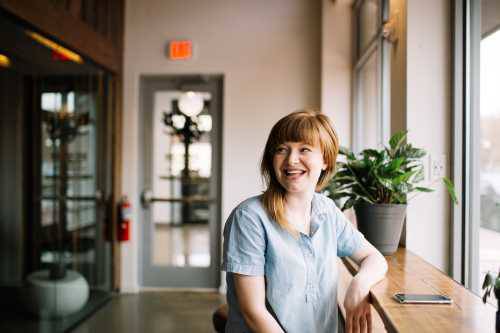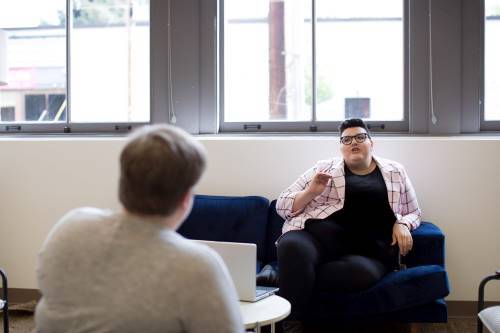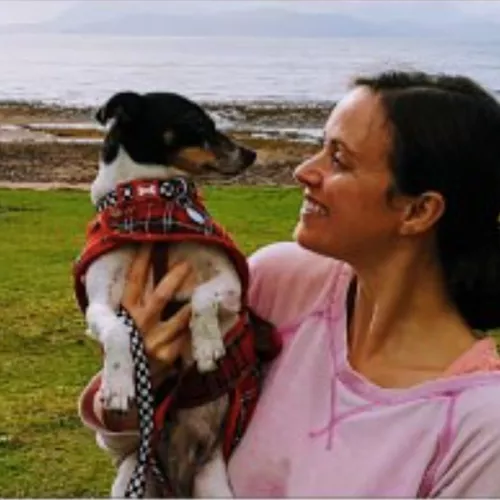Seasonal affective disorder (SAD)
Explains seasonal affective disorder, including possible causes and how you can access treatment and support. Includes tips for helping yourself, and guidance for friends and family.
View this information as a PDF (new window)
How can I help myself?
Living with SAD can be difficult, but there are lots of things you can do to help yourself cope. This page has some suggestions for you to consider.
Different things work for different people at different times, so if something doesn't feel possible just now try not to put pressure on yourself. You can always try something else or come back to it another time. For example:
If SAD affects you during winter, there are particular things you could try that might help. You could:
- Make the most of natural light. It might help to spend time in natural light, for example going for walks, spending time in parks or gardens, or simply sitting near a window. This seems to be helpful if you experience SAD in winter.
- Plan ahead for winter. For example, try to make meals in advance and freeze them if you know you are likely to lack the energy to do this during the most difficult period.
I try to get some natural light during the day just by being outside, maybe tidying up the garden or taking my dog for a walk. Exercise in natural light is really helpful.
If SAD affects you during hot weather, there are particular things you could try that might help. You could:
- Drink plenty of water so that you stay hydrated.
- Find ways to keep cool, such as finding shade or wearing loose clothing.
- Visit indoor places. Staying inside all the time could make you feel isolated. It could help to try doing activities indoors, like visiting your local library or going to the cinema.
- Plan ahead for summer. For example, try to avoid going outside at the hottest times of day where possible.
Talk to someone
It can be hard to reach out when you're not feeling well, but it might help to share how you're feeling. If you don't feel you can talk to the people around you or you need additional support, you could contact a helpline such as:
- Samaritans – open 24 hours a day, 365 days a year to listen to anything that's upsetting you. You can call 116 123 (free from any phone), email [email protected] or visit some branches in person. You can also call the Welsh Language Line on 0300 123 3011 (7pm–11pm every day).
- SANEline – support for people experiencing a mental health problem or supporting someone else. You can call them on 0300 304 7000 (4.30pm–10pm every day).
- Campaign Against Living Miserably (CALM) – support for anyone who wants to talk. You can call them on 0800 58 58 58 (5pm–midnight every day) or use their webchat service.
For more options, see our page on helplines and listening services. Mind's Infoline can also help you find services that can support you.
SAD is like a cold blanket that keeps depression and anxiety wrapped close to me. When I feel I can, I go outside and face the sun, close my eyes and focus on the light and warmth.
Keep a diary
You might find it helps to keep a note of your symptoms, including when they start and if particular things seem to trigger them, including changes in the weather. This could help you notice any patterns.
You could also make a note of things that feel helpful for you or which seem to make things worse. This can be helpful because SAD affects you at some times and not others, so you might not easily remember these details.
I keep a daily diary and it's helpful to look back over the years and see how each year I've felt the downward spiral starting.
Plan for difficult times
If you've noticed your symptoms follow a pattern, you may be able to work out when they're most likely to start in the future. This may help you put things in place for those times.
For example, you could:
- Re-arrange stressful activities or events for another time.
- Plan relaxing activities that might help improve your mood.
- Plan ahead, such as stocking up on things you need.
- Make more spare time to rest or do things you enjoy.
- Create a self-care box.
December is dark but the festive lights and cheerfulness are an antidote. I now put up my Christmas decorations really early (1st Dec) as a way of coping with my SAD symptoms and stretching out the 'fairy-lights antidote' for a whole month.
Try peer support
Peer support brings together people who have had similar experiences. Some people find this very helpful.
To find peer support, you could:
- Contact Mind's Infoline or your local Mind to see what support there is in your area.
- Explore our peer support directory.
- Ask your GP for details of support groups, and if you live in England you can also contact your local psychological therapies service.
- See if your local library or community centre has details of groups in your area.
- Try an online peer support community like Mind's Side by Side or SANE's support forum.
If you're seeking peer support on the internet, it's important to look after your online wellbeing. For more information see our pages on online mental health and peer support.
I have a dawn simulator alarm clock which lights up gradually to fill my space in the bedroom with a glow.
Learn ways to relax
- Manage stress. It can help to think of ways to manage pressure and build your emotional resilience. See our pages on how to manage stress for more information.
- Try some relaxation techniques. Learning to relax can help you look after your wellbeing when you are feeling stressed, anxious or busy. See our pages on relaxation for tips you could try, or see our information on mindfulness.
- Spend time in nature. Being outside in green space can help you feel more in touch with your surroundings. See our pages on nature and mental health for more information.
I get up early, wrap up warm, put on my pedometer and walk in the dark to enjoy the solitude. By the time people are up and about, I'm back home having walked a good few miles and feel so much better for it.
Look after your physical health
Looking after your physical health can make a difference to how you feel emotionally. For example, it can help to:
- Think about your diet. Eating regularly and keeping your blood sugar stable can be difficult when you have SAD. But trying your best to manage this where possible could make a difference to your mood and energy levels.
- Try to do some physical activity. If you find exercise a challenge remember that even gentle activities like yoga, swimming or walking can be a big boost to your mood. See our pages on physical activity for more information.
- Get help with sleep problems. For lots of people who experience SAD, sleeping too little or too much can be a problem. See our pages on coping with sleep problems for tips that might help.
- Try to look after your hygiene. When you're experiencing SAD, it's easy for hygiene to not feel like a priority. But small things, like taking a shower and getting fully dressed whether or not you're going out of the house, can make a big difference to how you feel.
- Try to avoid drugs and alcohol. While you might want to use drugs or alcohol to cope with any difficult feelings, in the long run they can make you feel worse. See our pages on the mental health effects of recreational drugs and alcohol for more information.
In summer my eyes, skin, throat and muscles ache. I find it difficult to concentrate. I can't take in information, and my short-term memory is unreliable. Evenings come as a relief. I feel my muscles relaxing as the sun goes down.
For more tips on supporting yourself see our pages on self-care for depression and self-care for anxiety.

How I found the joy in SAD
By December I am absolutely shattered mentally and physically and the best cure is just to go to sleep.
This information was published in April 2022. We will revise it in 2025.
References and bibliography available on request.
If you want to reproduce this content, see our permissions and licensing page.













